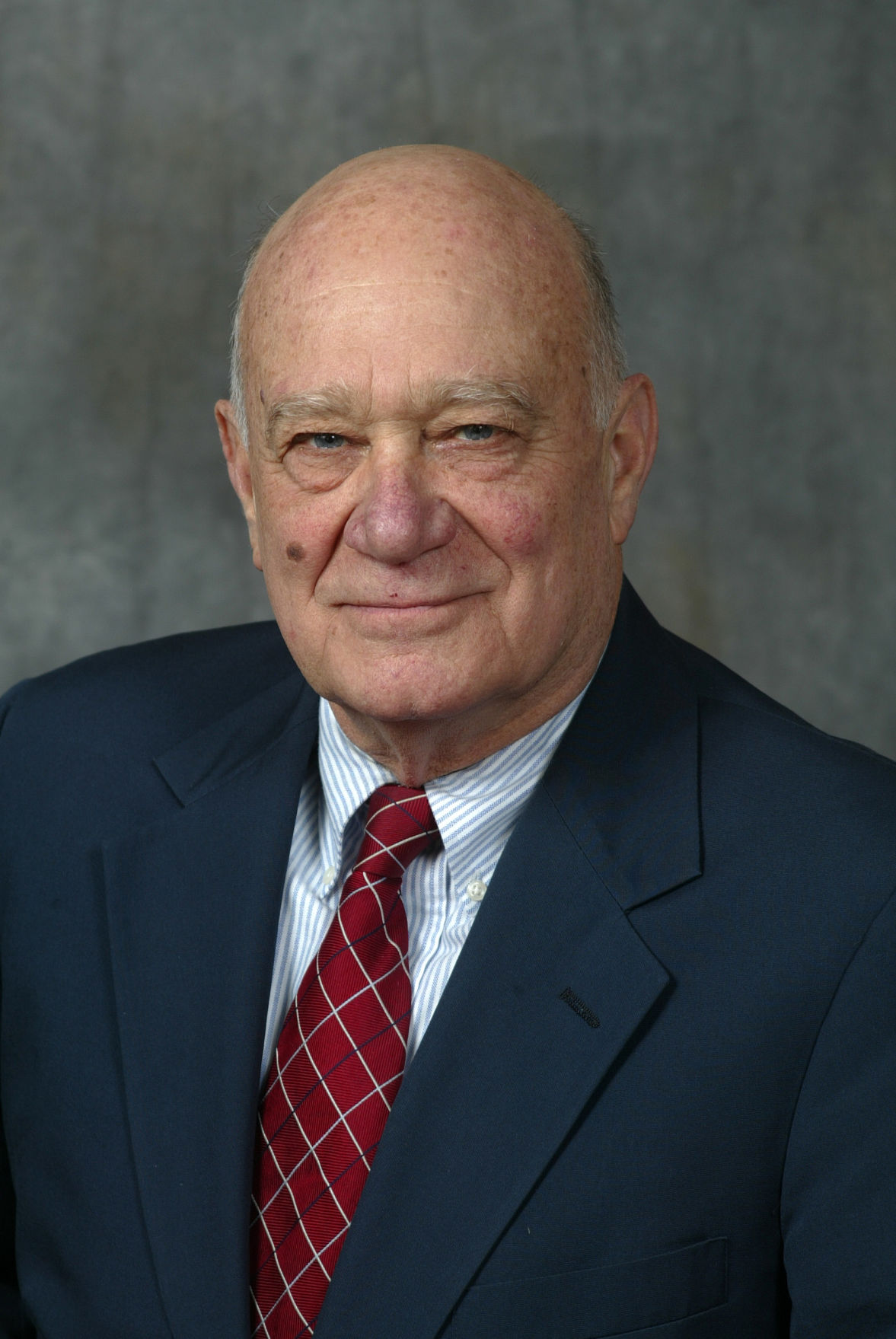Credit Miranda’s super Broadway play, “Hamilton,” for prompting more Americans to think about our nation’s titanic democracy struggles.
Some of those battles before 1804 (when Hamilton was killed in a duel) are still relevant for our 2016 elections.
Jefferson versus Hamilton conflicts, in my next column, will focus on deeper perspectives from the play, on the dramatic founding of our nation, and on the legacies of both men.
For this necessarily brief column, I rely again on my two late and great Hofstra colleagues, Robert Sobel and Broadus Mitchell.
I cannot resist a sidebar here about Sobel (one that illustrates his genius and the continuing impact he has on people long after his teaching days and his death).
While preparing this essay, I met with one of Hofstra’s most acclaimed alumni, Patti Ann Alleva (’76), and she remarked: “Didn’t Professor Sobel write ‘For Want of a Nail’?”
Yes, he did, and he won the U.S. national “Alternative History Prize” for imagining what America and the world might have been like if Burgoyne had won the “turning point” battle of Saratoga in 1777, allowing Britain to prevail in the Revolution so that an Anglo-American Empire led the world through the 20th century.
With Hofstra economic historian, Broadus Mitchell, Sobel celebrated Hamilton because he “thought continentally.”
They praise him for recognizing that a national economic system had to be devised in order to remain united, and to be secure in a still dangerous world.
Kudos are given to Hamilton for his creative national leadership, including laying the groundwork for a Constitutional Convention in 1787, writing many of the brilliant “Federalist Papers,” being a powerful speaker at the Philadelphia Convention (even after New York’s other two delegates walked out in protest).
Sobel and Mitchell highlighted other significant Hamilton contributions that Miranda might consider for an update when he takes his play on the road.
They show teenager Hamilton as a protest activist when he was a student at King’s College (later Columbia).
In addition to leading demonstrations, Alexander had his letter published in a New York newspaper to rally colonists against what he properly considered sneaky British “Tea Act” efforts to lure them into paying taxes.
Young Hamilton wrote: “Perhaps before long, your tables, chairs, and platters, and dishes, and knives and forks, and everything else would be taxed. Nay, I don’t know but that they would find means to tax you for every child you got, and for every kiss your daughters received from their sweethearts, and God knows, that would soon ruin you.”
Sobel and Mitchell argue that without Hamilton there might have been no Constitutional Convention at all, and that New York would have blocked the ratification process at its own 1788 Poughkeepsie Convention.
There is much drama in the story of how Hamilton extended the heated, summer, Poughkeepsie convention.
He used an early version of the “3-D”political strategy “delay, discourage, defeat.” He finally overcame the 46-to-19 margin of delegates who opposed ratification of the Constitution.
Perhaps there is an entire new play about that Poughkeepsie convention, featuring Hamilton, orator and strategist, threatening to have New York City secede from the rest of the state if the Constitution was voted down.
New York’s Constitution opponents belatedly offered to give approval only “on condition that” 1. amendments be first adopted to the 1787 document, and 2. that a new national convention be called to write a better constitution.
The “Anti-Federalist” majority was only willing to offer this conditional concession after 9 other states had already ratified the 1787 Constitution, thus providing the requisite number for formal approval.
When Virginia, led by Madison, became the 10th state to approve, Hamilton made the powerful argument that there will certainly be a new national government and New York needed to choose: “In” or “Out.”
Ever an adept wordsmith and political strategist, Hamilton settled for affixing the phrase “in full confidence” to the demands by the Anti Federalists.
He won that vote 30-27, overcoming early landslide opposition (elected by the most popular vote in all New York history to that time).
It is also worth noting, as Sobel and Mitchell emphasized, that Hamilton was a master at political “branding” (a highly prominent feature of our 2016 campaign).
First of all, he labeled opponents simply “Antis” avoiding the word “Federalist” (his goal was to portray them as negativists with no constructive program).
Equally significant, he never called his new government a “national” government (even though that was his intent); he spoke only of a “Federalism” that would foster harmony between a needed central government and the loosely aligned “league of friendship” states.
This point could be part of the “Hamilton’” play’s update in showing the conflicts between Hamilton and Madison (every bit as powerful as with Jefferson in Miranda’s script).
We tend to forget that while Hamilton and Madison were the key allies in the entire new process, they quickly became implacable foes over how the new national government would apply the principles of the Constitution.
Hamilton had also made special efforts to define the new government as a “Republic” and to assail “democracy,” and the role of ordinary citizens as a risk of “mobocracy.”
Such conflicts began before Jefferson returned from his post as ambassador to France.
From those, and other key Jefferson/Madison confrontations with Hamilton, my next column will track ties to our 2016 elections.



